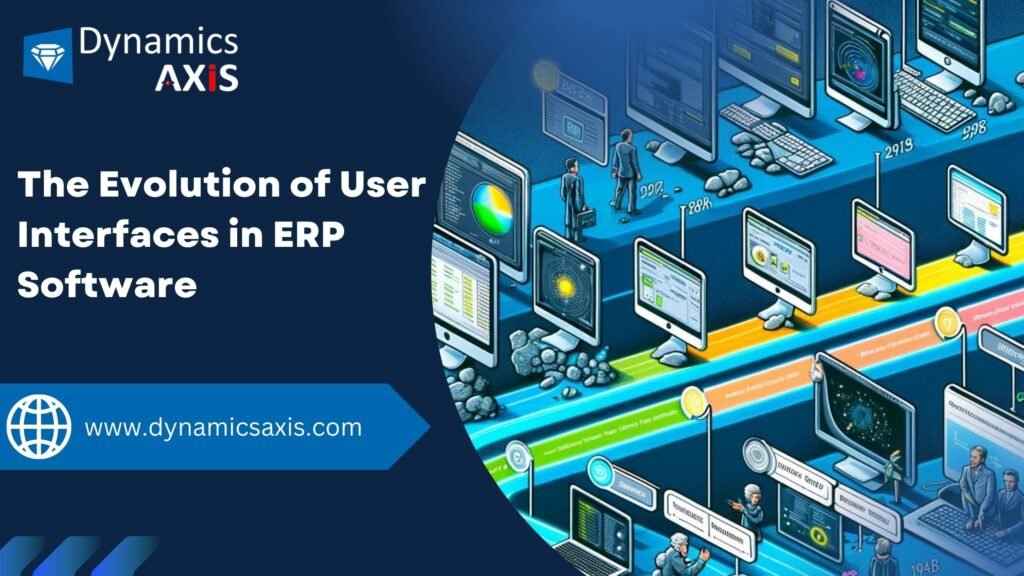The Evolution of User Interfaces in ERP Software
The Evolution of User Interfaces in ERP Software

The evolution of user interfaces (UI) in Enterprise Resource Planning (ERP) software marks a fascinating journey from complex, text-heavy screens to intuitive, user-centric designs. This evolution reflects broader technological advances and a growing understanding of the importance of user experience (UX) in software adoption and productivity. Let’s delve into the key milestones and future directions of UI in ERP software.
Early Days: Command-Line Interfaces
In the initial stages, ERP systems were operated through command-line interfaces (CLI), which required users to input text commands to navigate and perform tasks. This approach demanded a steep learning curve and in-depth knowledge of specific commands, making ERP systems accessible primarily to specialists.
The Shift to Graphical User Interfaces
The introduction of graphical user interfaces (GUI) was a significant leap forward. GUIs replaced text commands with graphical icons, menus, and windows, making ERP systems more accessible to a broader range of users. This transition facilitated easier navigation and task execution, reducing training time and errors.
Web-Based Interfaces: Accessibility and Flexibility
The advent of the internet era ushered in web-based ERP systems, which allowed users to access ERP software via web browsers. This innovation eliminated the need for localized installations, enabling remote access and increasing the flexibility of ERP systems. Web-based interfaces emphasized simplicity and navigability, catering to non-technical users.
Mobile and Responsive Design
With the rise of smartphones and tablets, ERP vendors began developing mobile-responsive designs, allowing users to access ERP systems on various devices with optimized viewing experiences. This mobile shift supported the growing trend of remote work and on-the-go access to business processes, emphasizing touch-friendly interfaces and streamlined workflows.
The Role of User Experience (UX) Design
The focus on UX design in recent years has significantly impacted ERP interfaces. Understanding that a well-designed UI can drastically improve productivity and user satisfaction, ERP developers now prioritize intuitive layouts, personalized dashboards, and interactive elements that provide meaningful feedback and support efficient task completion.
Personalization and AI
Modern ERP systems offer personalized user experiences, tailoring interfaces to individual roles, preferences, and workflows. Artificial intelligence (AI) and machine learning (ML) are increasingly integrated into ERP UIs, offering predictive analytics, intelligent automation, and personalized insights directly within the user interface.
Future Directions: Immersive and Conversational Interfaces
Looking ahead, the evolution of ERP UIs is poised to embrace more immersive and conversational interfaces. Augmented reality (AR) and virtual reality (VR) could provide immersive environments for complex data visualization and training. Simultaneously, conversational interfaces, powered by natural language processing (NLP), are expected to make ERP interactions more intuitive, allowing users to perform tasks through voice commands or natural language queries.
Conclusion
The evolution of user interfaces in ERP software illustrates a continual drive toward greater usability, accessibility, and personalization. As technology advances, ERP systems will likely become more intuitive, intelligent, and integrated into the daily workflows of users across diverse roles and industries, further blurring the lines between business software and natural human interaction.
